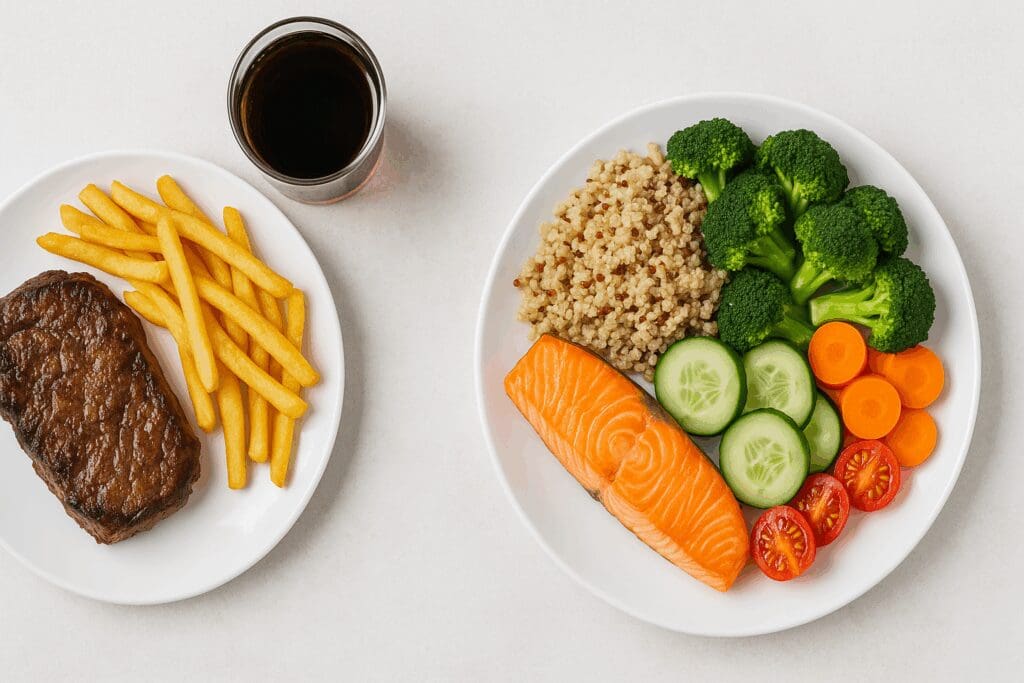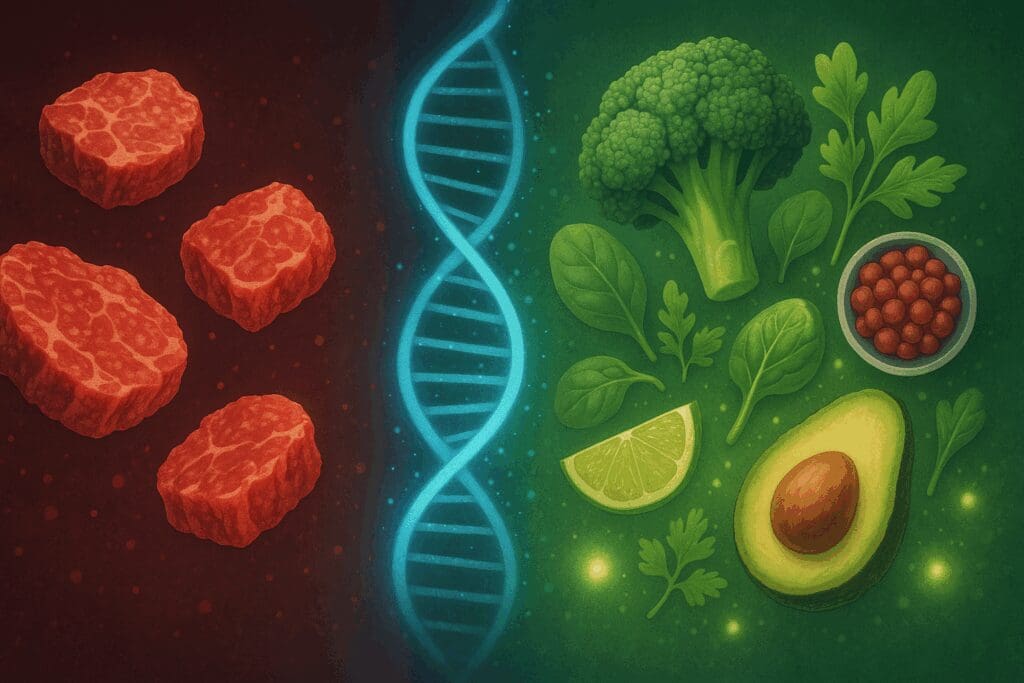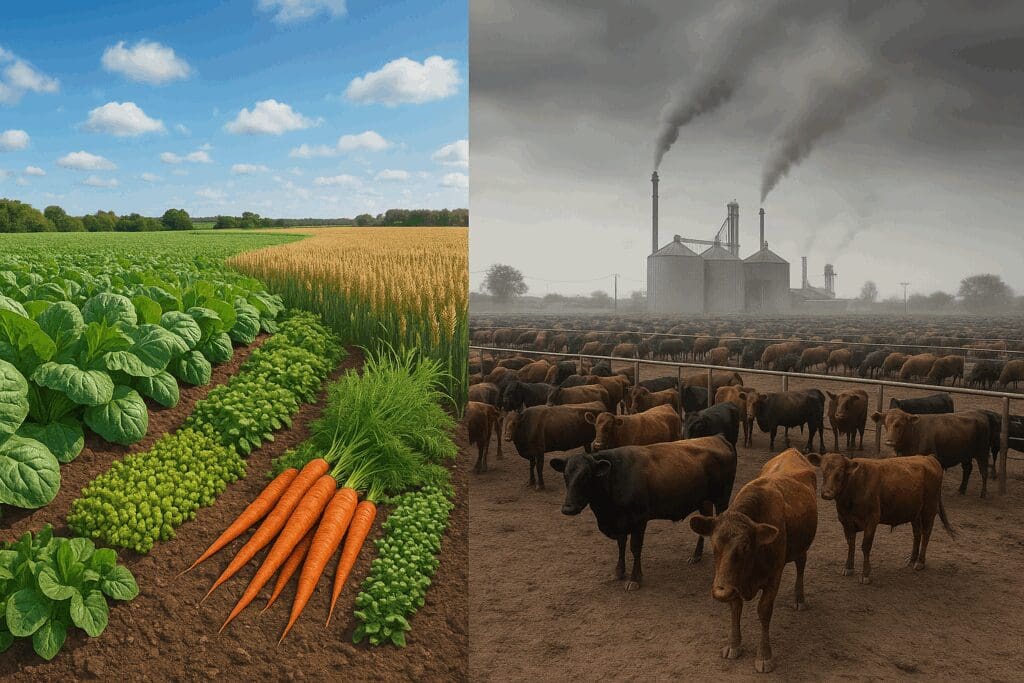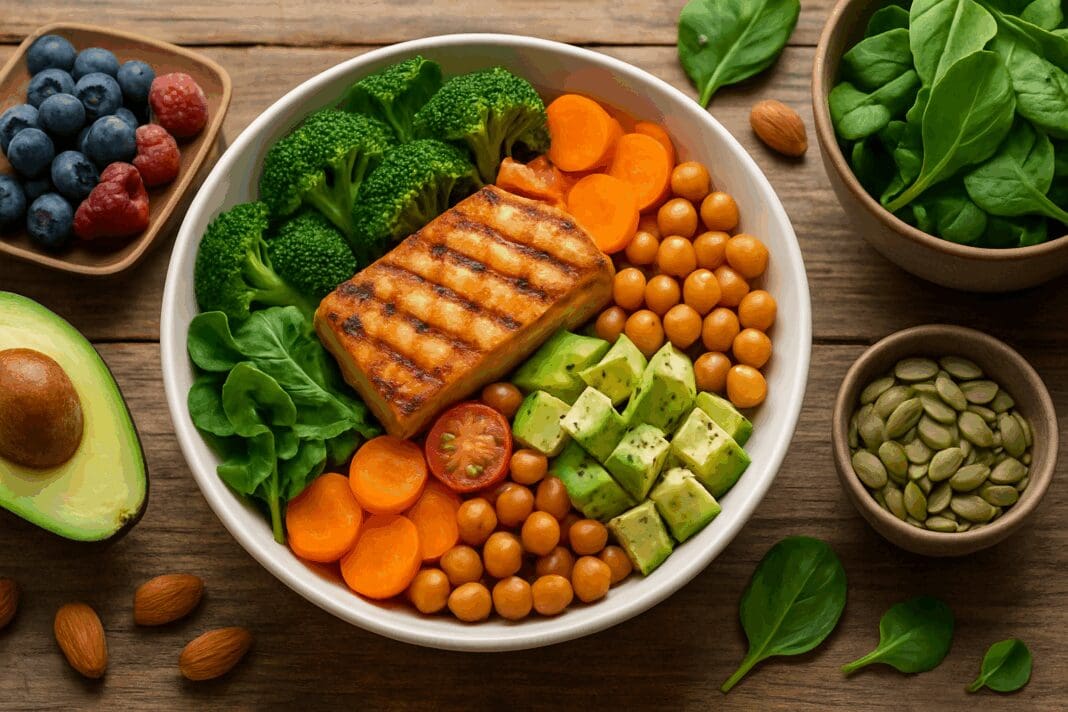Embracing a No Red Meat Diet: Why It Matters for Modern Health
Adopting a no red meat diet is an increasingly popular choice for individuals striving to improve their overall health, manage chronic conditions, and promote sustainable dietary habits. As research continues to shed light on the health implications of red meat consumption, particularly processed and high-fat varieties, more people are turning toward plant-based or diversified meat and vegetable diet patterns that limit or eliminate red meat altogether. This transition not only aligns with health-conscious goals but also reflects growing awareness of environmental sustainability and animal welfare. For those considering dietary changes, understanding the nuances and benefits of a no red meat diet is essential to making informed, health-positive decisions.
The decision to move away from red meat often stems from a variety of motivations, including concerns over cardiovascular disease, colorectal cancer risk, and inflammation-related disorders. While red meat can be a rich source of iron, zinc, and B vitamins, excessive intake—especially of processed forms like bacon and sausage—has been linked to adverse health outcomes. Replacing red meat with lean poultry, fish, legumes, and plant-based proteins allows individuals to maintain nutritional adequacy while potentially reducing the risk of chronic disease. This shift also opens the door to exploring a more balanced meat and veggie diet, emphasizing whole foods and plant-forward meals.
Transitioning to a no red meat diet, however, should be approached with thoughtful planning. It’s essential to ensure sufficient intake of protein, iron, and other key nutrients traditionally obtained from red meat sources. With strategic food choices and mindful meal planning, individuals can enjoy a diet that supports both short-term vitality and long-term wellness. By highlighting the vital health benefits and providing practical strategies for safe dietary transitions, this article aims to guide readers in making sustainable and nourishing lifestyle changes.
You may also like: 10 Essential Tips on Choosing Healthy Food for Ladies to Boost Energy and Wellness

Understanding the Health Concerns Linked to Red Meat
The health concerns associated with red meat consumption are well-documented and supported by numerous epidemiological and clinical studies. At the center of these concerns is the connection between red meat—especially processed varieties—and cardiovascular disease. High levels of saturated fat and cholesterol found in many red meats can contribute to plaque buildup in arteries, leading to atherosclerosis and increased risk of heart attack and stroke. Moreover, compounds such as carnitine and heme iron in red meat may influence gut microbiota in ways that promote inflammation and vascular dysfunction, adding to the cardiovascular burden.
Cancer risk is another area of concern, particularly colorectal cancer, which has been closely associated with regular red meat intake. The World Health Organization has classified processed meats as Group 1 carcinogens and red meat as a probable carcinogen due to the formation of potentially harmful compounds during high-heat cooking processes such as grilling or pan-frying. These include heterocyclic amines (HCAs) and polycyclic aromatic hydrocarbons (PAHs), both of which have been shown to damage DNA and increase cancer risk over time. Additionally, nitrates and nitrites used in curing processed meats may convert into carcinogenic nitrosamines in the body.
Beyond heart disease and cancer, excessive red meat intake has also been linked to type 2 diabetes, metabolic syndrome, and inflammatory disorders such as rheumatoid arthritis. Research indicates that high red meat consumption may exacerbate insulin resistance and elevate systemic inflammation, potentially worsening these conditions. In contrast, a balanced no red meat diet—rich in fiber, phytonutrients, and lean proteins—can support metabolic health, lower inflammation, and promote glycemic control. This growing body of evidence underlines the importance of reconsidering red meat’s place in the modern diet and exploring more protective, plant-forward eating patterns.

The Scientific Case for a No Red Meat Diet
Scientific research continues to affirm the health advantages of reducing or eliminating red meat from one’s diet. In long-term observational studies such as the Nurses’ Health Study and the Health Professionals Follow-Up Study, higher red meat consumption has been associated with increased mortality, particularly from heart disease and cancer. Conversely, individuals who replace red meat with plant-based proteins such as legumes, nuts, tofu, or whole grains tend to experience lower rates of chronic disease and improved longevity. These findings underscore the health benefits of shifting toward a no red meat diet and reinforce the need for population-wide dietary guidance.
One of the most striking benefits is the reduction in saturated fat intake. Saturated fat is a known contributor to LDL cholesterol (the “bad” cholesterol), which plays a central role in atherosclerosis and coronary artery disease. By opting for lean poultry, fatty fish rich in omega-3s, and plant-based proteins, individuals can significantly reduce their intake of harmful fats while increasing heart-protective nutrients such as polyunsaturated fats and fiber. This shift supports healthy lipid profiles and cardiovascular resilience, which are vital for long-term health.
Moreover, plant-forward and meat and veggie diet patterns are associated with a lower dietary inflammatory index, indicating reduced levels of systemic inflammation. Chronic inflammation is a key driver in the development of many degenerative diseases, including Alzheimer’s disease, arthritis, and even depression. By removing red meat from the diet and emphasizing anti-inflammatory foods such as leafy greens, berries, and omega-3-rich seafood, individuals can support immune balance and reduce the physiological stress burden. The scientific evidence in favor of a no red meat diet is not only compelling but also increasingly accessible through reputable nutritional research.

Nutritional Considerations: What to Replace and How
Eliminating red meat from one’s diet requires more than just subtraction; it necessitates intentional replacements to ensure nutritional adequacy. Red meat is a significant source of complete protein, iron—particularly heme iron—vitamin B12, zinc, and creatine. When transitioning to a no red meat diet, it is crucial to replace these nutrients through a variety of alternative food sources. Without proper planning, deficiencies can emerge over time, potentially leading to fatigue, anemia, or compromised immune function.
Protein can be effectively sourced from poultry, eggs, dairy, fish, tofu, tempeh, lentils, and legumes. Many of these sources offer the added benefit of fiber, which red meat lacks, and are lower in saturated fat. For those following a meat and vegetable diet without red meat, incorporating diverse plant and animal proteins ensures that essential amino acids are adequately supplied. Iron can be obtained from lentils, chickpeas, pumpkin seeds, quinoa, and fortified cereals, though non-heme iron is less bioavailable than the iron in meat. To enhance absorption, it is advisable to consume these foods with vitamin C-rich produce like bell peppers, oranges, or strawberries.
Vitamin B12, found naturally only in animal products, must be prioritized, particularly for those minimizing all meat sources. Dairy, eggs, and fortified plant milks or nutritional yeast are reliable sources, and supplementation may be warranted in certain cases. Zinc, another critical mineral, is present in nuts, seeds, whole grains, and legumes. As individuals begin a no red meat diet, working with a dietitian or using nutrient tracking tools can be invaluable in maintaining a balanced intake. By making informed choices, this dietary shift can be both nutritionally robust and deeply satisfying.
How a No Red Meat Diet Can Improve Heart Health
Among the most well-documented benefits of a no red meat diet is its positive impact on cardiovascular health. Heart disease remains the leading cause of death globally, and diet plays a crucial role in its development and prevention. Red meats, especially when consumed in large quantities or in processed forms, are rich in saturated fats and cholesterol, both of which contribute to elevated LDL cholesterol levels and arterial plaque formation. The removal of red meat from the diet helps reduce these risk factors, leading to improved vascular function and reduced strain on the heart.
A diet that excludes red meat naturally leans toward higher intake of heart-protective foods such as fish rich in omega-3 fatty acids, legumes loaded with soluble fiber, and antioxidant-rich vegetables. These foods help regulate blood pressure, lower LDL cholesterol, and support endothelial health. For instance, omega-3s in fatty fish like salmon or mackerel help reduce triglyceride levels and prevent arrhythmias, while fiber from beans and lentils can help lower cholesterol by binding it in the digestive tract. A meat and veggie diet that emphasizes diversity and whole foods also introduces essential phytonutrients known to reduce inflammation and oxidative stress—both major contributors to heart disease.
Beyond cholesterol, eliminating red meat from the diet can also improve markers of metabolic health, such as insulin sensitivity and inflammatory cytokines like C-reactive protein (CRP). Several studies suggest that individuals following vegetarian or semi-vegetarian diets—both of which align with no red meat eating patterns—exhibit lower rates of hypertension, obesity, and type 2 diabetes. These metabolic benefits work synergistically to reduce the burden on the cardiovascular system, making the no red meat diet a potent ally in heart disease prevention. By shifting away from red meat and embracing a heart-centered dietary approach, individuals take proactive steps toward lasting cardiac health.

No Red Meat Diet and Cancer Risk Reduction
One of the most compelling arguments for adopting a no red meat diet is its role in cancer prevention. A growing body of evidence links high red meat intake—especially processed types—to increased risk of several cancers, including colorectal, pancreatic, and prostate cancer. Red meat contains heme iron, which can promote the formation of N-nitroso compounds in the gut, substances that have been shown to damage the colon lining and contribute to tumor formation. Furthermore, the cooking of red meat at high temperatures leads to the production of carcinogens such as heterocyclic amines (HCAs) and polycyclic aromatic hydrocarbons (PAHs), both of which are associated with DNA mutations.
The World Health Organization’s classification of processed red meat as a Group 1 carcinogen is a sobering reminder of the potential health implications tied to frequent consumption. By adopting a no red meat diet, individuals can significantly reduce their exposure to these cancer-promoting compounds. This dietary change is particularly relevant for individuals with a family history of colorectal cancer or those already managing conditions that increase cancer susceptibility. In these contexts, dietary modifications become not just preventive, but potentially life-saving.
Replacing red meat with a plant-based or meat and vegetable diet high in antioxidants, fiber, and anti-inflammatory compounds creates an internal environment less conducive to cancer development. Cruciferous vegetables like broccoli, kale, and Brussels sprouts contain sulforaphane, a compound that has been studied for its anti-carcinogenic properties. Legumes and whole grains, rich in dietary fiber, promote healthy digestion and lower the risk of colon cancer by fostering beneficial gut flora and reducing fecal transit time. As such, moving toward a no red meat diet becomes a strategic, research-backed way to reduce cancer risk and promote cellular health across the lifespan.

Gut Health and the Microbiome: The Impact of Skipping Red Meat
Emerging research on gut health and the microbiome has added another layer of insight into the benefits of a no red meat diet. The human gut is home to trillions of bacteria that influence everything from immune response to mood regulation and metabolic balance. Red meat consumption, particularly in large quantities, has been shown to negatively impact gut microbial diversity and promote the growth of bacteria that produce trimethylamine N-oxide (TMAO), a compound linked to cardiovascular disease. High levels of TMAO in the bloodstream are considered a significant biomarker for heart attack and stroke risk.
In contrast, diets rich in plant-based foods foster a more diverse and beneficial microbiome. Soluble and insoluble fibers found in fruits, vegetables, legumes, and whole grains serve as prebiotics—fuel for beneficial gut bacteria. These microbes, in turn, produce short-chain fatty acids (SCFAs) like butyrate, which support intestinal barrier function, reduce inflammation, and contribute to metabolic regulation. Eliminating red meat from the diet can help reduce the abundance of harmful bacteria and promote a gut environment that supports overall health.
How to Start a No Red Meat Diet Safely and Sustainably
Transitioning to a no red meat diet can be a smooth and enriching experience when approached with thoughtful planning and realistic expectations. The first step is to assess your current dietary patterns and identify the role red meat plays in your meals. From there, set practical goals—such as replacing red meat meals two or three times a week with poultry, seafood, or plant-based proteins—and gradually increase these substitutions over time. This stepwise approach allows for taste adaptation, minimizes disruption, and encourages sustainable change.
A successful no red meat diet is not about deprivation but exploration. Discovering flavorful and satisfying alternatives is key to long-term adherence. For example, try lentil or black bean tacos instead of ground beef, or explore global cuisines that naturally emphasize legumes, grains, and vegetables. Mediterranean, Indian, and East Asian diets offer rich inspiration for meat and veggie diet patterns that align with health and culinary satisfaction. Cooking at home also allows greater control over ingredients and empowers individuals to create balanced, nutrient-dense meals.
Nutritional adequacy remains paramount. Focus on diversifying protein sources and incorporating iron-rich plant foods alongside vitamin C for enhanced absorption. For individuals concerned about B12 or zinc intake, include fortified foods or consider supplements as guided by a healthcare provider. Engage in regular self-monitoring to evaluate energy levels, satiety, and any signs of deficiency. Consulting a registered dietitian during the transition can provide personalized guidance and help you tailor your no red meat diet to meet your specific health needs. With intentionality and creativity, this lifestyle change can become a deeply rewarding journey toward improved health and mindful eating.

Environmental and Ethical Advantages of a No Red Meat Diet
While the health benefits of eliminating red meat are compelling, the environmental and ethical implications further underscore the value of this dietary choice. Red meat production, particularly beef, is associated with significant environmental costs, including greenhouse gas emissions, water usage, and land degradation. Livestock farming contributes to deforestation, biodiversity loss, and methane emissions—a potent contributor to climate change. By reducing or eliminating red meat intake, individuals can substantially lower their personal carbon footprint and contribute to global sustainability efforts.
Moreover, a no red meat diet often reflects deeper ethical considerations about animal welfare and the industrial practices surrounding meat production. Concerns about overcrowded feedlots, antibiotic use, and inhumane slaughter methods motivate many to seek alternatives that align with their values. Embracing plant-based meals or choosing sustainably sourced poultry and seafood options allows consumers to make choices that reflect compassion and ecological stewardship.
The cumulative impact of millions of individuals making these changes can be profound. As demand for red meat declines, it sends a powerful message to food producers and policymakers about consumer priorities. It also helps normalize diverse, plant-forward diets in mainstream culture, reducing social and economic barriers to adopting these patterns. Ultimately, a no red meat diet is not just a personal health decision—it is a vote for a more ethical, sustainable, and health-conscious food system.
Navigating Social and Cultural Aspects of a No Red Meat Diet
Changing long-standing dietary habits often intersects with social norms, cultural practices, and familial expectations. Red meat plays a central role in many traditional cuisines and social gatherings, from backyard barbecues to holiday feasts. Adopting a no red meat diet can present challenges in these settings, but with preparation and communication, these challenges can be turned into opportunities for connection and creativity.
Begin by sharing your dietary goals with close friends and family, explaining the health or ethical motivations behind your decision. This can foster understanding and reduce social pressure. Offer to bring no red meat dishes to gatherings or suggest inclusive meal options that accommodate a range of dietary preferences. Highlighting the deliciousness and variety of meatless meals—such as grilled portobello mushrooms, chickpea curries, or lentil-based pasta sauces—can also inspire others to experiment with plant-forward eating.
Cultural traditions need not be abandoned but can be adapted. In many global cuisines, legumes, grains, and vegetables play a foundational role, offering rich culinary inspiration for no red meat adaptations. For example, Middle Eastern cuisine offers mujadara (lentils and rice), while Ethiopian dishes like misir wat (spiced lentils) provide bold flavors without red meat. Embracing these alternatives allows individuals to honor cultural heritage while aligning with modern health goals. With openness and creativity, navigating the social aspects of a no red meat diet becomes a source of empowerment and shared growth.
Frequently Asked Questions About Following a No Red Meat Diet
1. What are the long-term health benefits of a no red meat diet?
Adopting a no red meat diet can yield significant long-term health benefits, particularly for cardiovascular and metabolic wellness. Numerous studies have shown that reducing or eliminating red meat consumption may lower the risk of hypertension, high cholesterol, and certain cancers, especially colorectal cancer. Replacing red meat with lean proteins in a meat and vegetable diet—such as poultry, fish, tofu, or legumes—can help maintain muscle mass while promoting better digestion and lower inflammation. This shift also often encourages a more balanced intake of fiber, antioxidants, and heart-healthy fats, which are vital for aging well. When a no red meat diet is well-rounded and nutrient-rich, it becomes a sustainable tool for long-term vitality and disease prevention.
2. How can I structure a no red meat diet without relying solely on carbs?
A common misconception is that eliminating red meat means increasing carbohydrate intake, but a balanced meat and veggie diet can easily offer adequate protein without this trade-off. Incorporate diverse sources like eggs, Greek yogurt, lentils, tempeh, edamame, and lean poultry to build satisfying meals. By balancing these with vegetables high in fiber and micronutrients—such as kale, broccoli, and bell peppers—you avoid blood sugar spikes and maintain satiety. The goal is to structure meals that mirror the nutritional profile of a complete protein-and-fiber pairing without the red meat. With this structure, a no red meat diet can remain nutrient-dense and low glycemic without falling back on processed carbs.
3. What makes the no red meat diet easier to follow compared to other restrictive diets?
Unlike diets that cut entire food groups, a no red meat diet allows for a wide variety of protein options and doesn’t eliminate complex carbohydrates, healthy fats, or dairy (unless desired). This flexibility makes it easier to adopt across cultures and lifestyles, especially when following a meat and vegetable diet that features seasonal produce and versatile protein substitutes. Unlike keto or vegan diets that can feel extreme to some, this approach doesn’t require total elimination of meat—poultry and seafood are still permitted. The simplicity of a meat and veggie diet also helps reduce decision fatigue, making meal planning more sustainable. It’s a manageable shift that delivers health benefits without overwhelming change.
4. Can a no red meat diet support active individuals or athletes?
Absolutely. A no red meat diet can fully support the nutritional needs of active individuals and athletes when thoughtfully planned. Lean poultry, eggs, fish, tofu, and plant-based protein powders offer ample amino acids for muscle repair and performance. A well-structured meat and vegetable diet can also support energy metabolism with high-quality carbs from whole grains and root vegetables. To optimize recovery, meals should include both protein and anti-inflammatory foods like leafy greens, avocado, and berries. Many endurance athletes now embrace the no red meat diet for its cardiovascular benefits and improved post-workout recovery times.
5. How can I transition to a no red meat diet if red meat has been a staple in my culture?
Transitioning to a no red meat diet doesn’t mean abandoning your culinary heritage—it’s about thoughtful substitutions. Traditional meat-heavy dishes can often be adapted using poultry, legumes, or plant-based meat alternatives. For example, a meat and veggie diet can reimagine dishes like beef stew with lentils and mushrooms, or grilled kebabs using marinated chicken or tempeh. Embracing regional herbs and spices allows you to preserve flavor while adjusting ingredients. A no red meat diet thrives when it’s personalized and respectful of cultural roots, making it emotionally and socially easier to maintain.
6. What are common nutrient deficiencies to watch out for on a no red meat diet?
While a no red meat diet offers many health benefits, certain nutrients require extra attention, particularly iron, vitamin B12, and zinc. Non-heme iron from plant sources isn’t as readily absorbed as heme iron from red meat, so pairing it with vitamin C-rich foods like citrus or peppers is essential. Eggs, dairy, fortified cereals, and nutritional yeast can help maintain B12 levels, while pumpkin seeds, lentils, and seafood provide excellent sources of zinc. A diverse meat and veggie diet usually meets most nutritional needs if meals are well-balanced. Still, a periodic blood test and consultation with a registered dietitian can ensure you’re staying on track.
7. What are the psychological effects of switching to a meat and veggie diet?
Surprisingly, many people report improved mood and mental clarity after adopting a meat and veggie diet. This may be attributed to reduced intake of saturated fat and increased intake of plant-based antioxidants and fiber, which positively influence gut health and neurotransmitter production. Additionally, committing to a no red meat diet can foster a sense of purpose and control, especially for those motivated by ethical or environmental concerns. That said, emotional ties to red meat—especially if it’s a comfort food—can initially be challenging. Addressing this with mindfulness, community support, and new rituals around cooking can ease the transition and promote mental resilience.
8. What’s the difference between a meat and vegetable diet and a no red meat diet?
While both approaches prioritize lean proteins and vegetables, a meat and vegetable diet is broader and doesn’t necessarily exclude red meat—it simply focuses on balance. A no red meat diet, on the other hand, explicitly avoids all red meat (beef, lamb, pork, etc.) while still potentially including white meat and seafood. The distinction is important when tailoring nutrition for specific health concerns; for instance, individuals managing high cholesterol may specifically benefit from eliminating red meat. If your goal is overall health maintenance, either diet can work—but a no red meat diet may offer additional heart-health advantages. Ultimately, both can be powerful when structured around whole foods and mindful eating.
9. How can I ensure variety and excitement in a no red meat diet?
The key to variety in a no red meat diet is experimentation with texture, seasoning, and preparation. Swap traditional meat-centric meals with global dishes like Thai basil chicken, Moroccan chickpea stew, or Mediterranean grilled fish with roasted vegetables. Explore different protein sources like paneer, eggs, tofu, and tempeh to add diversity to your meat and vegetable diet. Seasoning plays a vital role—spices, marinades, and fresh herbs can transform simple meals into culinary experiences. Planning meals around seasonal produce and international flavors keeps the diet enjoyable and sustainable long-term.
10. Is a no red meat diet environmentally sustainable?
Yes, choosing a no red meat diet is one of the most impactful ways individuals can reduce their environmental footprint. Red meat production is linked to significantly higher greenhouse gas emissions, water use, and land consumption compared to poultry, legumes, or vegetables. A meat and veggie diet that emphasizes local, seasonal ingredients also supports sustainable agriculture and biodiversity. Moreover, diversifying protein sources helps reduce dependency on industrial-scale livestock farming. Embracing a no red meat diet is not only a health-forward decision—it’s also a meaningful contribution to planetary well-being.
Conclusion: Reclaiming Health and Conscious Living Through a No Red Meat Diet
A no red meat diet offers a wealth of health, environmental, and ethical benefits for those willing to embrace its principles with intention and care. From reducing the risk of heart disease and cancer to improving gut health and metabolic balance, the advantages are supported by a growing body of scientific research. Coupled with the positive impact on the environment and animal welfare, this dietary shift aligns with a broader vision of sustainable, mindful living. Transitioning to a no red meat lifestyle is not about restriction but about opening doors to new culinary experiences, nutritional abundance, and personal empowerment.
By integrating a variety of plant-based foods, lean proteins, and whole vegetables into daily meals, individuals can enjoy a fulfilling and balanced meat and veggie diet that supports long-term wellness. Thoughtful planning, cultural adaptability, and nutritional awareness are key to making this transition both safe and sustainable. Whether motivated by health concerns, environmental values, or a desire for dietary renewal, those who choose to eliminate red meat from their diets are making a conscious decision that reverberates far beyond their own plates.
Ultimately, a no red meat diet is a lifestyle choice grounded in evidence, compassion, and personal growth. It invites each of us to rethink our relationship with food and to prioritize practices that nourish not only our bodies but also our communities and the planet. In doing so, we reclaim our agency over health and consumption—one conscious bite at a time.
Further Reading:
All You Need to Know About the Carnivore (All-Meat) Diet



